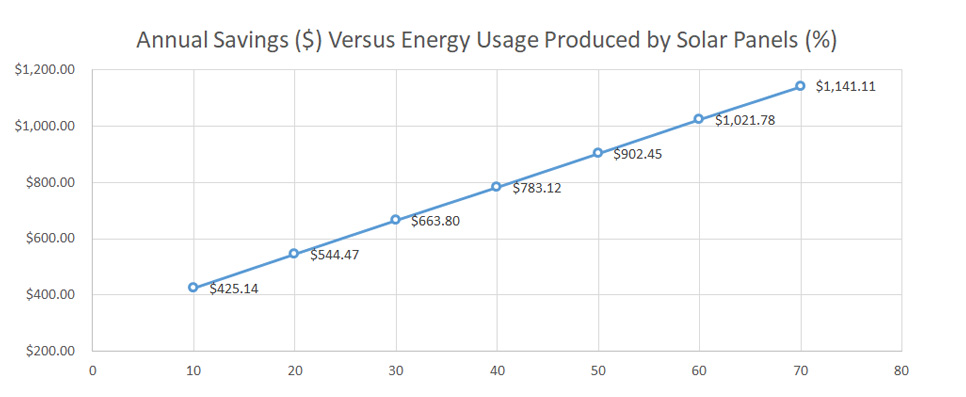Why Go Solar

As electric power engineers, we particularly promote solar photovoltaic (PV) power generation with the option to integrate electric vehicle (EV) charging and smart micro-grid expansion in the future.
Utilizing solar energy is essentially fuelless. This technology is far ahead of the game when many countries or jurisdictions are striving to phase out coal and even nuclear power generation.
According to a 2014 publication by IEA, the increasing electrification worldwide requires drastic changes in power supply and demand, while "current trends in energy supply and use are unsustainable - economically, environmentally and socially."
According to CanSIA (Canadian Solar Industries Association) President and CEO, John Gorman, "Solar electricity is the smart choice to power Canada's future."
Cost of PV power generation system has decreased significantly. According to a CanSIA publication, "FIT/mFIT: 2017 Price Review", the CanSIA Installed Cost for a 6 kW rooftop PV system is Can$2.84 per watt, while for a 500 kW system it is Can$2.27 per watt.
For property owners (residential, commercial, governmental, institutional, farming or industrial), installing a PV generation system is always a viable option.
Now is a great time to take action, because the earlier you install a PV system on your property, the sooner you can help revert the negative trend in modern industrial society's electric power generation that is creating too much pollutants.
Frequently Asked Questions
Is solar power generation an investment?
Yes and no. It definitely costs money to install an eye-catching feature on your property.
But the measurement of the benefit is not simplistic. It is untrue or misleading to measure the outcome purely financially.
In addition to the financial benefit, more important benefits are in saving the planet and keeping economic growth sustainable.
1 kWh of energy generated from your own roof saves 1 kWh being generated elsewhere and being delivered to you via a very expensive network system.
From this perspective, investing in a rooftop PV micro-generation is your commitment to sustainable economic growth.
Why are savings dependent on lifestyle adjustment?
If one exports all or most of their solar power into the grid, the same amount of power without a solar system would have to be withdrawn from the grid, this would lead to the least financial benefit of generating solar power.
The current treatment of micro-generation encourages the user to consume power generated on site and discourages exporting power back onto the grid.
Consequently, a significant disparity exists between the price of exporting solar power onto the grid and withdrawing power from the grid.
In 2018, one earns about $0.03951/kWh (per the wire owner's Rate Schedule) credit for exporting solar power onto the grid, but pays $0.10-$0.15/kWh (per the effect of fixed amount on variable kWh being consumed) for power from the grid.
The following chart shows the dollar benefit of solar power generation as a function of the percentage of power being supplied by the PV system.
For example, if 60% of power consumed by a household comes from the PV system, dollar savings could amount to $1,021.78 in a 12-month frame.
Note that due to the winter months being low generation months, it's definitely unlikely for the PV system to supply 60%.
But during the summer months, the PV system may supply more than 60%.

Will adding rooftop solar panels impair my roof?
The roof is an important piece of the property. Our installers are well trained and shall not compromise the roof. There are accessories to prevent snow sliding from panels. We follow the best industry practice and use the best available hardware.
What happens if I sell the property?
Rooftop PV power generation is meant to be permanent fixture being added to the property and should be kept with the property, not the owner. Paperwork you get will explain this and will have clauses to cover the property ownership transfer. PSTI does provide service to salvage or restore the roof.
How will the rooftop system perform in adverse weather?
Panels are secure from both wind and hail. On a roof with normal pitch, snow is usually not a concern. On relatively flat roof, snow may not melt easily and will affect the output. But winter months do not produce much generation anyway. So rooftop solar generation has been successful in Calgary region regardless of the roof pitch.
Alberta Solar Incentives
Among multiple incentive programs provided by the Albertan government, there is a "Residential and Commercial Solar Program" (RCSP) which defines the limit of the incentive to the LESSER of $10,000 or 30% of eligible system costs for residential installations, and the LESSER of $500,000 or 25% of eligible system costs for commercial installations.
Rebates are provided through Energy Efficiency Alberta and are based on the installed power capacity, calculated at $0.75 per watt up to the above limit. Once an installation is inspected and connected, property owners can expect to receive a direct deposit in ten to fifteen business days.
Note that participants in RCSP give up right to trade or monetize Environmental Attributes arising from the solar PV project. Energy Efficiency Alberta keeps and retires immediately the Environmental Attributes as a contribution to meeting Alberta's commitment of emission reductions outlined in the Pan-Canadian Framework on Clean Growth and Climate Change.
The website for Solar Energy Society of Alberta here has a comprehensive collection of municipal, provincial, federal incentive programs.
